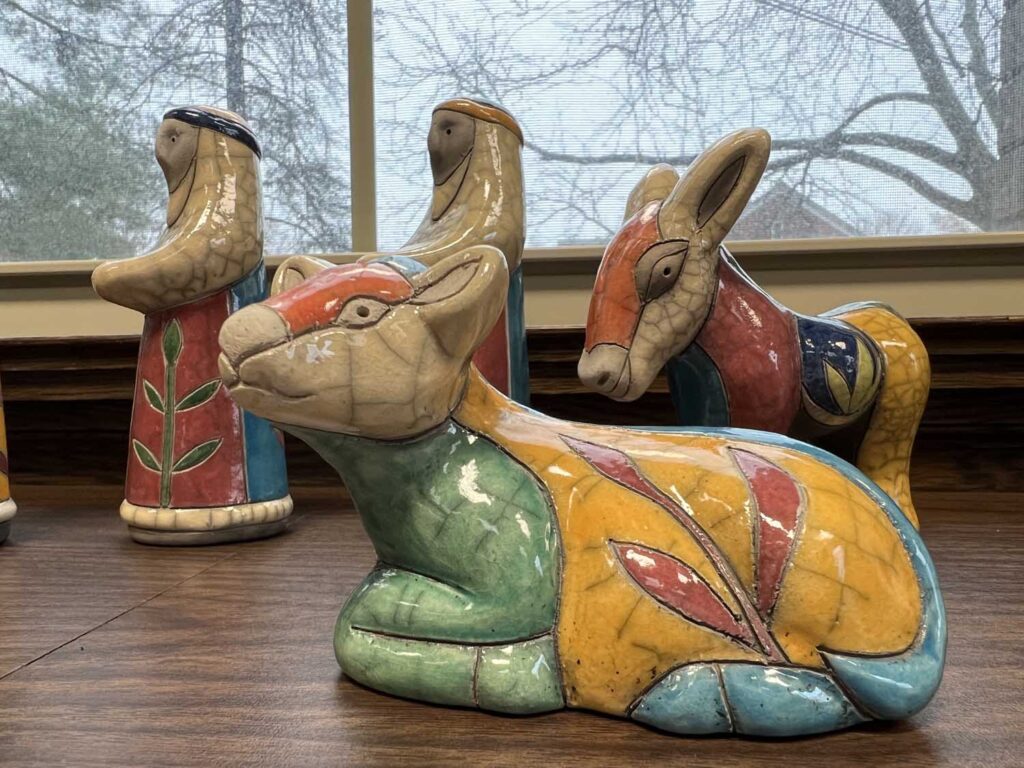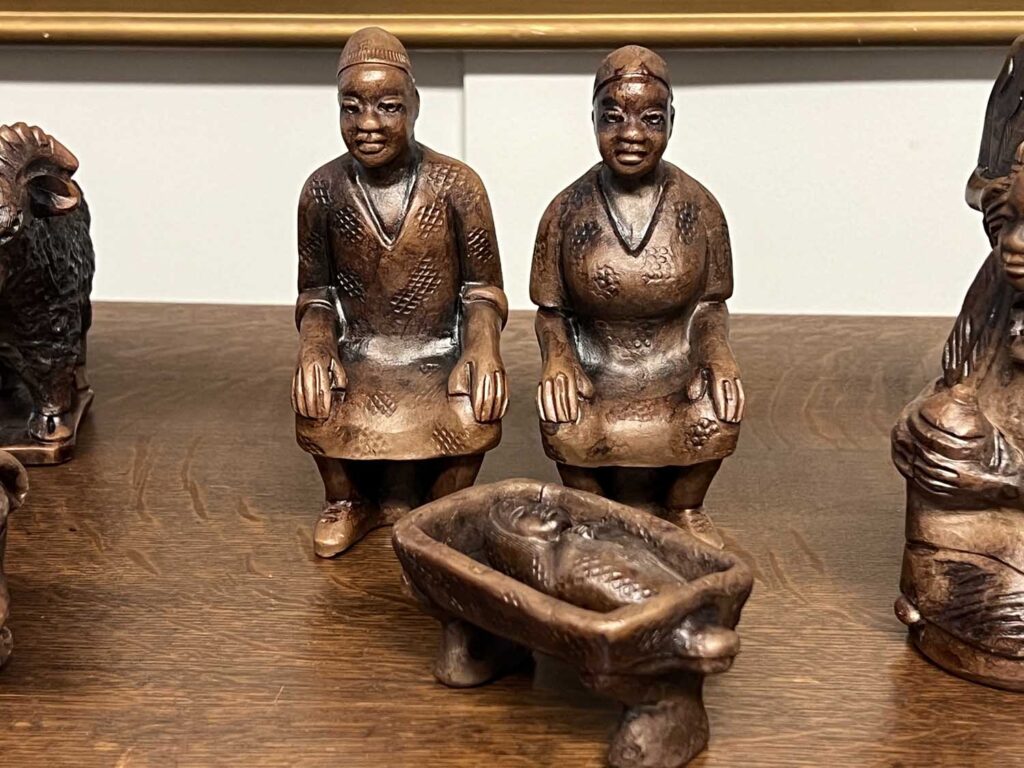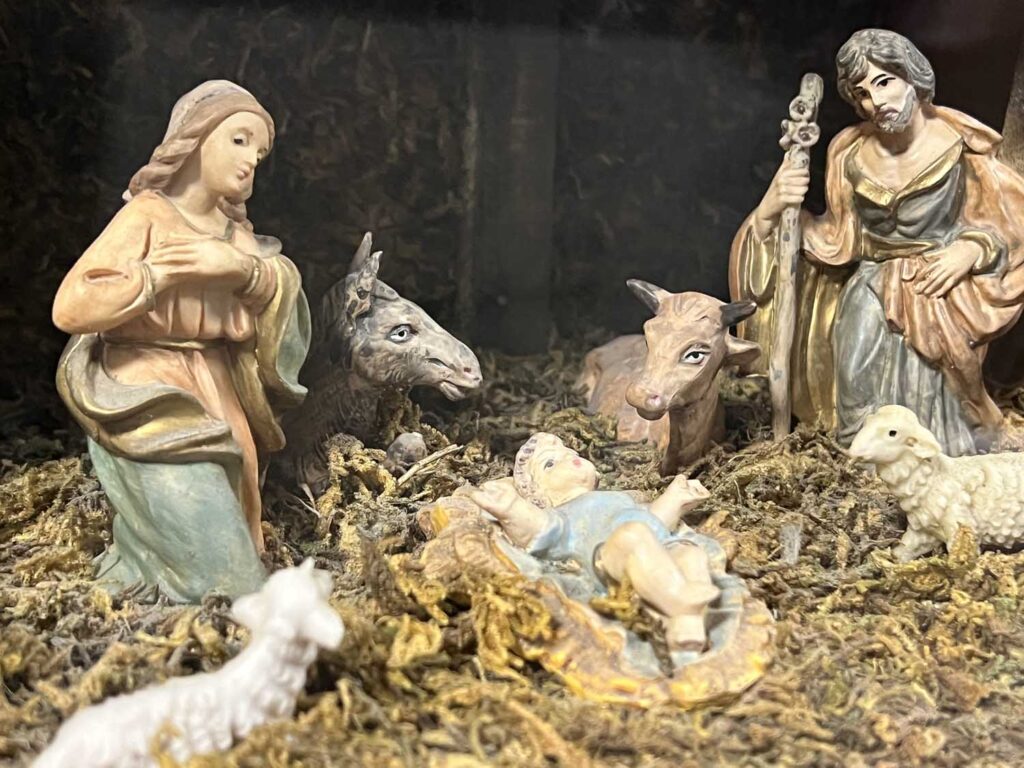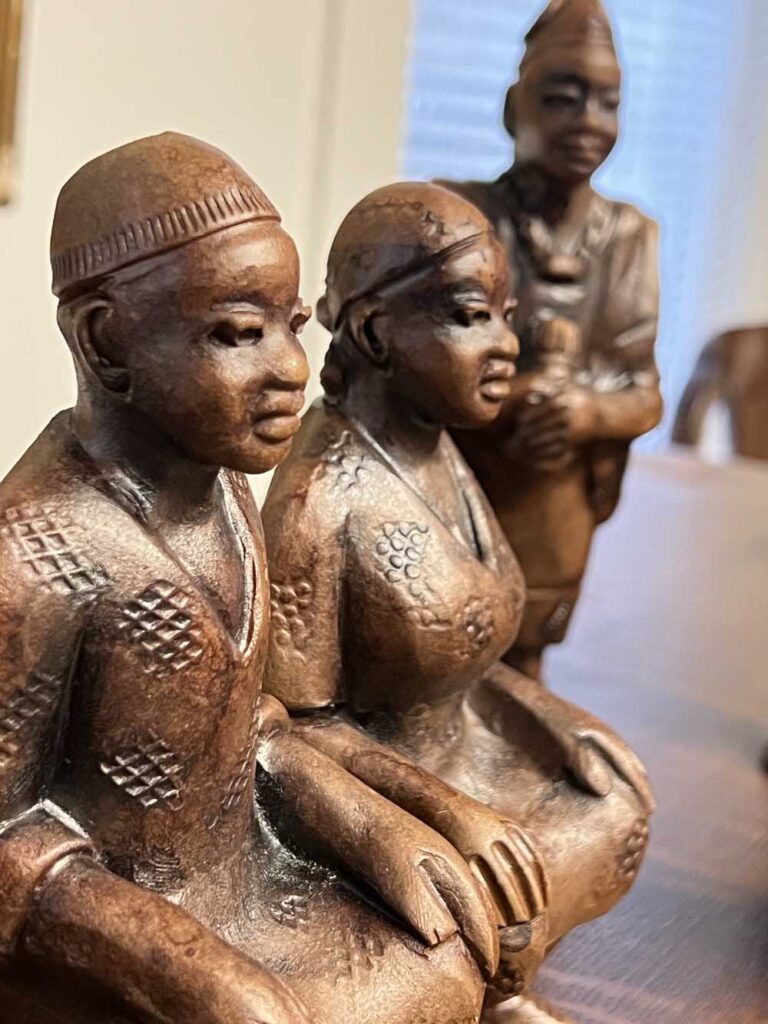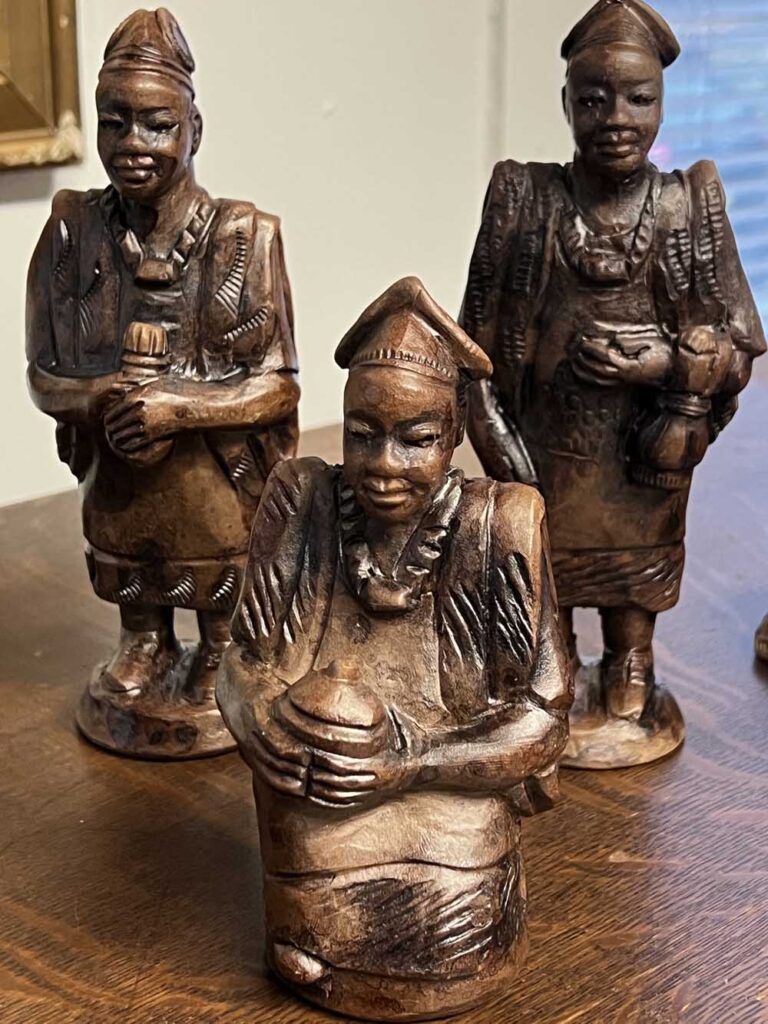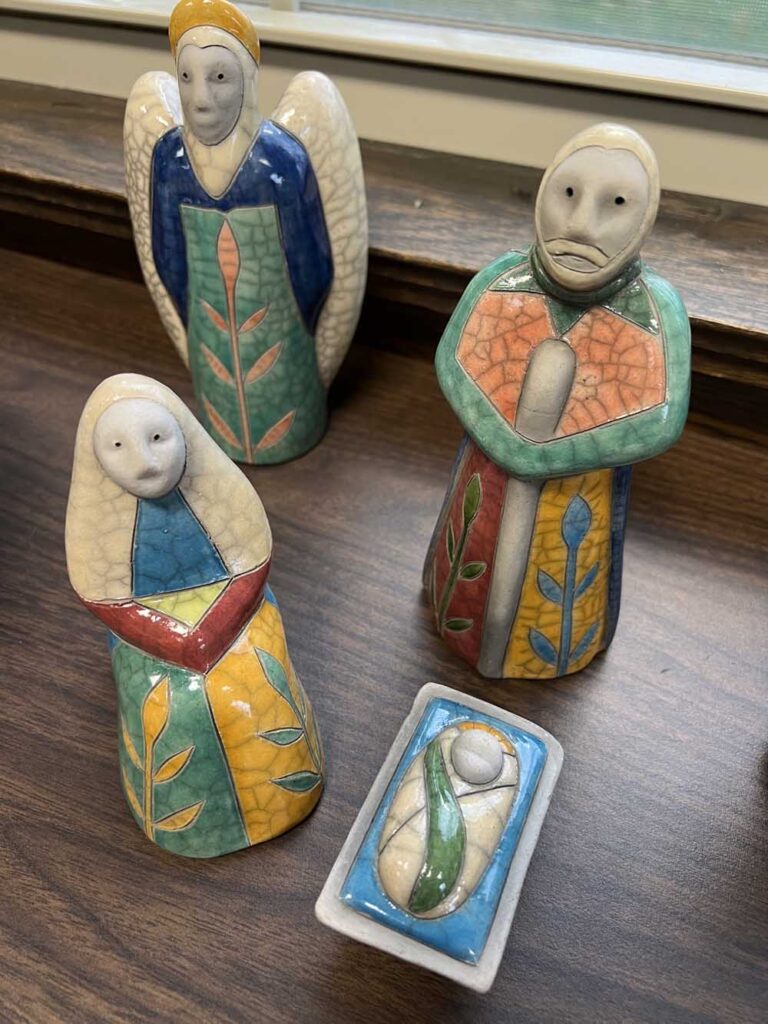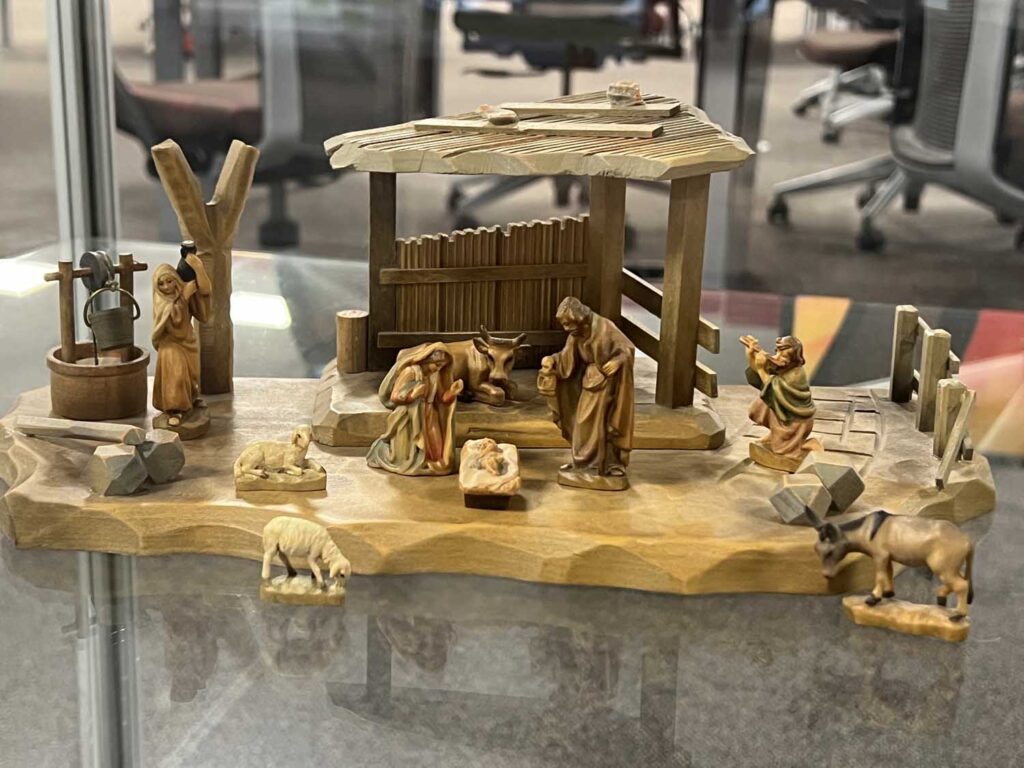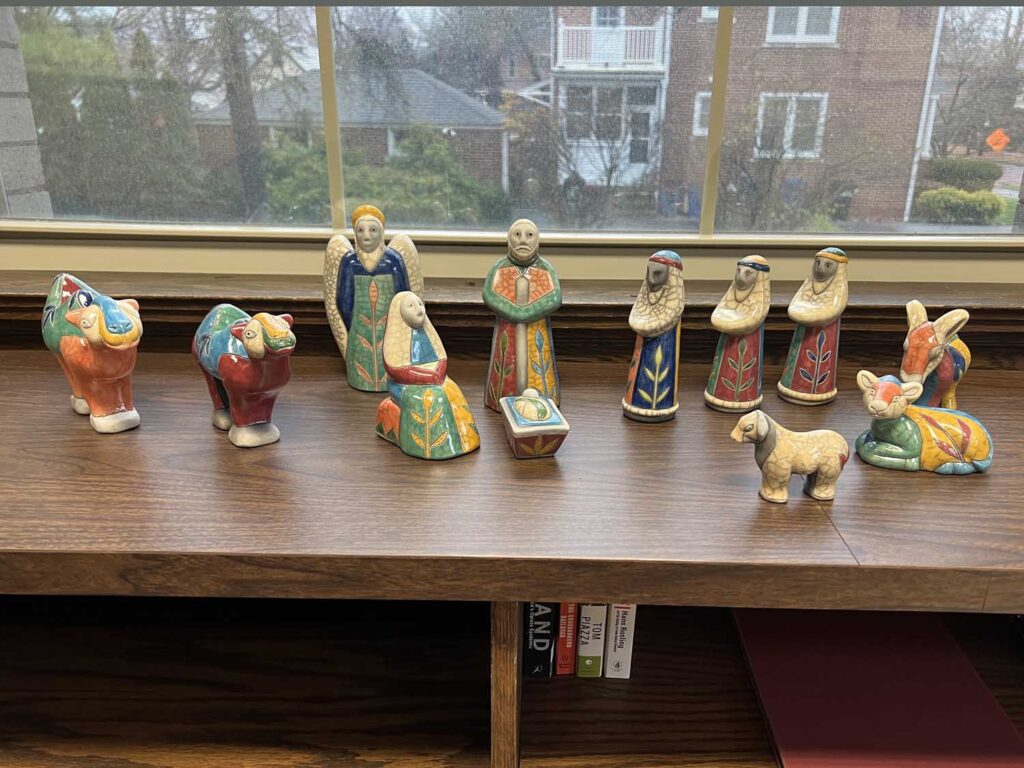Otterbein Celebrates 800th Anniversary of First Nativity Scene with Displays of Crèches
Posted Dec 05, 2023
The crèches come from a collection of 660 from around the world collected and donated by alumni couple Richard ’54 and Carolyn Brown ’53 Sherrick.
In 1223, Saint Francis of Assisi received permission from Pope Honorius III to create the first nativity scene in Greccio, Italy. In this small village, Francis installed the first living nativity scene on Dec. 24, complete with ox, donkey, and baby. St. Francis intended, by recreating the scene from the Gospel of St. Luke, to remind the faithful of Christ’s humble beginnings and the love of God.
The nativity scene grew to become an established annual tradition in Italy, and then spread across the world. The crèche tradition quickly spread across Europe. Sculpted figures in a variety of materials and sizes now frequently take the place of living nativities in displays that are called crèches. Artisans in different countries depict the nativity with materials and in forms that reflect their own cultures.
For example, now on view in Otterbein’s Courtright Memorial Library, sets made in the Italian tradition often included a manger. A miniature scene by the Spanish artist, Juan Ferrandiz, features the infant in his manger with a tiny bird at his head and lamb and bunny at his feet. One scene from Laos is set in a traditional Laotian wood structure and features a hanging swing for the infant and adds an elephant to the mix of barnyard animals. Another example from Alaska, made by Inuit artisans from soapstone, features animals of the Arctic, including a walrus, bear, and moose.
This year, Otterbein is celebrating the 800th anniversary of the first nativity scene by displaying a handful of crèches from the Sherrick Nativity Collection — 660 nativity scenes lovingly collected and generously donated to Otterbein’s Frank Museum of Art by Richard ’54 and Carolyn Brown ’53 Sherrick. The Sherricks met and fell in love while students at Otterbein, and have traveled the world together, bringing back crèches from cultures near and far.
The following displays will be available for public viewing from 8:30 a.m.-5:30 p.m., Monday-Friday, now-Dec. 22:
- Courtright Memorial Library – Six crèches, including two from Italy, one from Italy by a Spanish artist, one from Laos, one from Germany, and one by indigenous artists from Alaska.
- Admission Office in Clippinger Hall – A 12-piece ceramic figure group made by the Ndebele people of South Africa in 2001.
- President’s Office in Roush Hall – A wooden crèche by artist Edgar Shwer, Oberammergau, Germany.
- Howard House – A 12-piece ceramic figure group from Cameroon.
All are welcome to visit each of the crèches to learn more about the pieces and their cultural significance.
